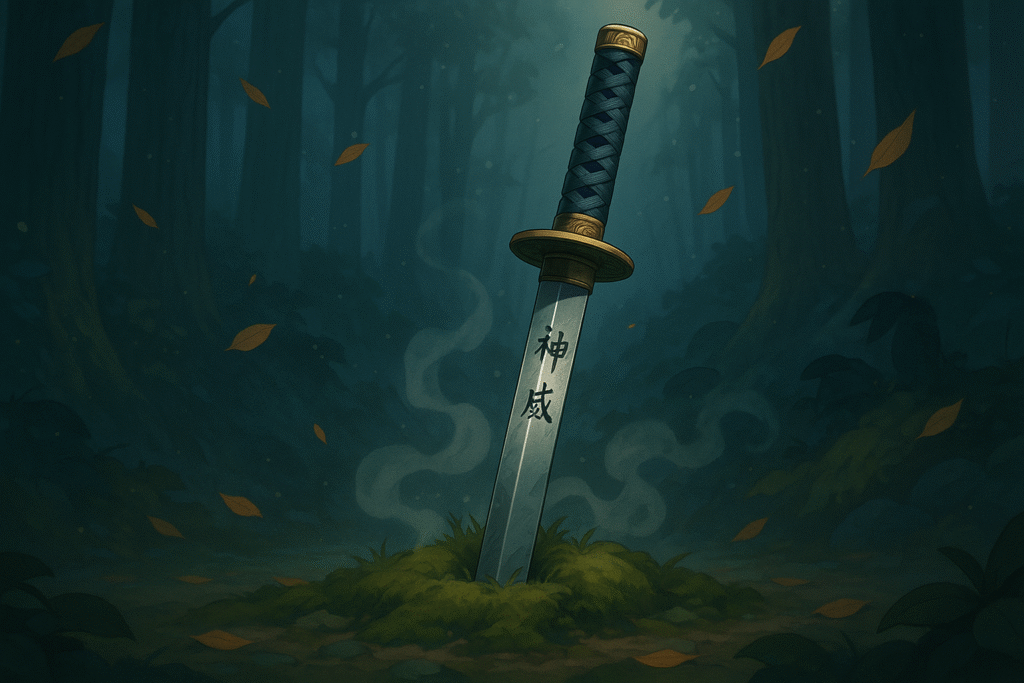Have you ever wondered why famous Japanese trees draw millions of visitors each year? From the iconic cherry blossoms that paint spring landscapes in delicate pink to the fiery maples that transform mountainsides in autumn, Japan’s remarkable trees aren’t just plants – they’re living symbols of culture, history, and spirituality.
In this comprehensive guide, we’ll explore the most celebrated trees in Japan, their significance in Japanese culture, and where you can find these botanical wonders. Whether you’re planning a trip to Japan or simply fascinated by its natural beauty, join us as we uncover the secrets of famous Japanese trees that have captivated people for centuries.
Want to explore Japan’s culture?
Discover Japan’s rich culture, traditions, and hidden gems with our expertly crafted guides. Get insider tips on travel, food, and history. All for free!
The Cultural Significance of Famous Japanese Trees
Japan’s relationship with its trees runs deeper than mere appreciation of beauty. With approximately 67% of the country covered in forests, Japan ranks among the world’s most heavily forested developed nations. This abundant natural backdrop has profoundly shaped Japanese identity, spirituality, and daily life.
Spiritual Connections
For millennia, the Japanese have regarded certain trees as sacred. Ancient Shinto beliefs hold that kami (spirits or gods) dwell within remarkable trees. Even today, you’ll find shimenawa (sacred ropes) wrapped around especially impressive specimens, marking them as spiritually significant.
These sacred trees, called shinboku, serve as living bridges between the earthly and divine realms. This reverence for trees extends to architecture as well, with temples and shrines traditionally constructed from wood harvested through respectful rituals.
Artistic Inspiration
Famous Japanese trees have inspired countless artists, poets, and craftspeople throughout history. From ukiyo-e woodblock prints depicting cherry blossom viewing parties to the refined art of bonsai that miniaturizes the majesty of full-sized trees, arboreal influences permeate Japanese aesthetic traditions.
Most Famous Japanese Blossom Trees
Among Japan’s diverse arboreal treasures, certain species have achieved legendary status for their spectacular blossoms. These trees don’t just grow in Japan – they define entire seasons and cultural celebrations.
Sakura (Cherry Trees)
No discussion of famous Japanese trees would be complete without celebrating the sakura. These iconic cherry trees transform Japan each spring during hanami (flower viewing) season.
The most common ornamental variety, Somei Yoshino (Prunus × yedoensis), creates breathtaking canopies of delicate five-petaled blooms. Their brief flowering period – typically just one week – embodies the Japanese concept of mono no aware, the poignant awareness of impermanence.
For an exceptional cherry blossom experience, consider visiting Mount Yoshino, where over 30,000 cherry trees create a stunning pink landscape that has drawn admirers for more than a millennium.

Ume (Japanese Plum/Apricot)
Blooming earlier than cherry trees, ume (Prunus mume) heralds the end of winter with fragrant white, pink, or red blossoms. Though less internationally famous than sakura, ume holds special cultural significance as a symbol of perseverance, as these trees flower while snow still covers the ground.
Notable ume viewing spots include Kairakuen in Mito and Yushima Tenmangu Shrine in Tokyo, where February brings spectacular displays across hundreds of trees representing numerous cultivars.
Tsubaki (Camellia)
The glossy-leaved camellia produces stunning red, pink, or white flowers during winter months when few other plants bloom. Symbolizing divine power in Shinto beliefs, these famous Japanese trees have been cultivated for centuries for both ornamental and practical purposes – camellia oil remains an important traditional hair care product.
Spectacular Autumn Trees of Japan
While spring blossoms receive international attention, Japan’s autumn leaf viewing (koyo) season showcases equally remarkable famous Japanese trees that transform landscapes with fiery colors.
Momiji (Japanese Maple)
Perhaps Japan’s most celebrated autumn tree, the Japanese maple (Acer palmatum) creates spectacular mountainside tapestries of red, orange, and gold. With deeply lobed leaves that resemble hands with outstretched fingers, these trees are instantly recognizable symbols of Japanese autumn.
Kyoto’s temples, particularly Tofuku-ji and Eikan-do, offer breathtaking displays when momiji reach peak color, typically in mid-to-late November. For a truly immersive experience, visit the maple corridor at Kawaguchiko, where the trees frame perfect views of Mt. Fuji.
Icho (Ginkgo)
The fan-shaped leaves of ginkgo trees turn a luminous gold in autumn, creating some of Japan’s most dramatic seasonal displays. As living fossils unchanged for over 200 million years, ginkgo trees connect modern Japan to the ancient world.
Tokyo’s Meiji Jingu Gaien features a famous avenue lined with ginkgo trees that transforms into a golden tunnel each November, drawing thousands of photographers and nature enthusiasts.
Famous Japanese Trees in Traditional Forestry
Japan’s forestry traditions have elevated certain tree species to exceptional cultural importance, not just for their beauty but for their practical applications in architecture, crafts, and daily life.
Hinoki (Japanese Cypress)
Considered Japan’s most sacred timber, hinoki cypress (Chamaecyparis obtusa) has been used in temple and shrine construction for centuries. The 1,300-year-old structures at Horyu-ji Temple showcase hinoki’s remarkable durability and resistance to decay.
These famous Japanese trees grow slowly, developing tight, straight grain patterns prized by craftspeople. Their wood contains natural aromatic oils that produce a distinctive, pleasant scent that persists for decades after harvesting.
Sugi (Japanese Cedar)
Japan’s national tree, the sugi (Cryptomeria japonica), dominates many famous Japanese forests, particularly in mountainous regions. These towering conifers can live for over 2,000 years and grow to impressive heights exceeding 70 meters.
The most celebrated individual sugi is undoubtedly the Jomon Sugi on Yakushima Island, estimated to be between 2,000 and 7,000 years old. This ancient giant has achieved UNESCO World Heritage status and draws hikers willing to undertake a challenging 10-hour round-trip journey just to stand in its presence.
Keyaki (Japanese Zelkova)
With its distinctive elmlike appearance and beautifully grained wood, the keyaki tree (Zelkova serrata) has been prized by woodworkers for centuries. These deciduous trees can reach 30 meters in height and live for hundreds of years.
Famous examples include the avenue of keyaki trees at Kenrokuen Garden in Kanazawa and the ancient specimens at Kashima Shrine in Ibaraki Prefecture.
Love Japan? Stay in the Loop!
Get the best of Japan straight to your inbox: language, culture & travel insights!
Where to See Famous Japanese Trees
Japan offers countless opportunities to experience its remarkable trees, from meticulously maintained gardens to wild forests. Here are some exceptional destinations for tree enthusiasts:
Famous Japanese Forests
- Arashiyama Bamboo Grove (Kyoto): While technically grasses rather than trees, the towering bamboo creates one of Japan’s most photographed forest scenes.
- Shiratani Unsuikyo (Yakushima): This ancient forest of moss-covered cedars inspired the magical forest scenes in Studio Ghibli’s “Princess Mononoke.”
- Aokigahara (Mount Fuji): Known as the “Sea of Trees,” this dense forest at the base of Mt. Fuji features remarkable natural phenomena due to its volcanic soil.
Notable Garden Collections
- Kiyosumi Gardens (Tokyo): Features an outstanding collection of famous Japanese trees carefully cultivated over centuries.
- Ritsurin Garden (Takamatsu): One of Japan’s finest landscape gardens showcases artistic pruning techniques applied to native tree species.
- Kenrokuen (Kanazawa): Considered one of Japan’s three great gardens, it features iconic pine trees trained into distinctive shapes through traditional techniques.
Preserving Japan’s Arboreal Heritage
As climate change and urbanization threaten some of Japan’s famous tree species, conservation efforts have intensified. Organizations like the Japanese Association for Wild Tree Conservation work to document, protect, and propagate significant trees.
Many famous Japanese trees now enjoy special protected status, with the oldest and most culturally significant specimens designated as natural monuments under Japanese law.
Experience Famous Japanese Trees Yourself
For those planning to visit Japan, timing your trip to coincide with seasonal tree displays can create unforgettable experiences. Consider these tips:
- Cherry blossom season typically runs from late March to early April in Tokyo and Kyoto, but varies by location and year
- Autumn colors usually peak in mid-November in Kyoto and Tokyo, but earlier in northern regions
- Research specific forecast calendars for your destination, as optimal viewing windows can be brief
If you’re planning a trip to Japan focused on experiencing these botanical treasures, check out our guide to planning your Japan trip budget to make the most of your adventure without breaking the bank.
For those who want to learn more about Japan’s rich natural environment before visiting, download our free guide to Japanese natural wonders from our resources page.

FAQ About Famous Japanese Trees
What is the most famous tree in Japan?
The most famous tree in Japan is the cherry blossom tree (sakura), specifically the Somei Yoshino variety, which has become a national symbol appearing on everything from currency to government emblems.
When is the best time to see cherry blossoms in Japan?
The best time to see cherry blossoms in Japan is typically late March to early April in Tokyo and Kyoto, though timing varies by location and climate conditions each year.
How old are the oldest trees in Japan?
The oldest trees in Japan are estimated to be 2,000-7,000 years old, with the Jomon Sugi cedar on Yakushima Island frequently cited as the country’s most ancient living tree.
Why are trees considered sacred in Japan?
Trees are considered sacred in Japan because of Shinto beliefs that view exceptional or unusual trees as dwelling places for kami (spirits or gods), creating a spiritual connection between humans and the natural world.
What Japanese tree changes color in autumn?
The Japanese maple (momiji) is the most celebrated Japanese tree that changes color in autumn, transforming from green to vibrant shades of red, orange, and gold.
From ancient forest giants to delicate flowering species, famous Japanese trees continue to captivate visitors while maintaining their central place in Japanese culture. Whether you’re planning a dedicated arboreal tour or simply want to appreciate these living treasures during your Japanese adventures, the remarkable trees of Japan offer experiences that connect us to nature’s beauty and the rich cultural heritage they have inspired.
Have you experienced any of Japan’s famous trees firsthand? Share your stories in the comments below!
Join Fellow Japan Enthousiasts!
Ask questions, get study tips, and take part in weekly challenges. Join a community of motivated learners exploring both the language and culture of Japan!




